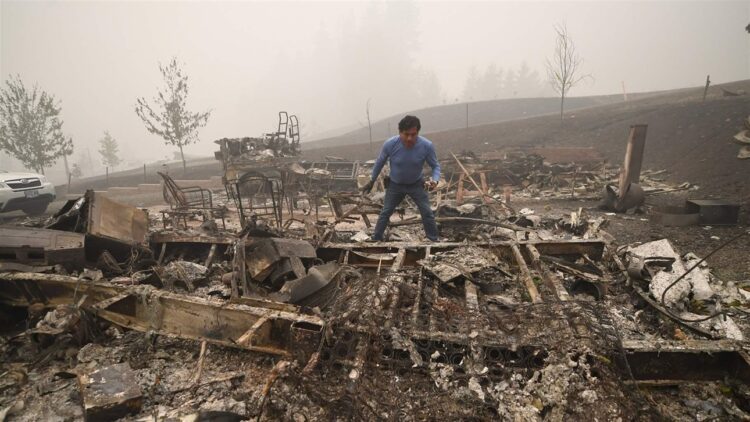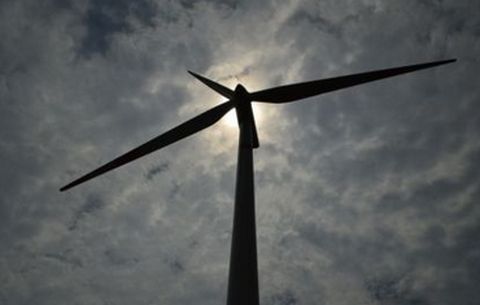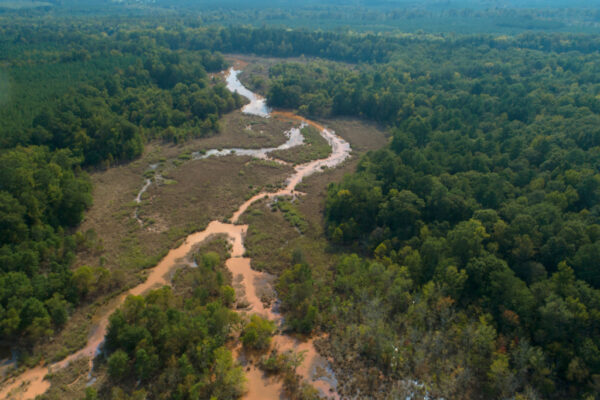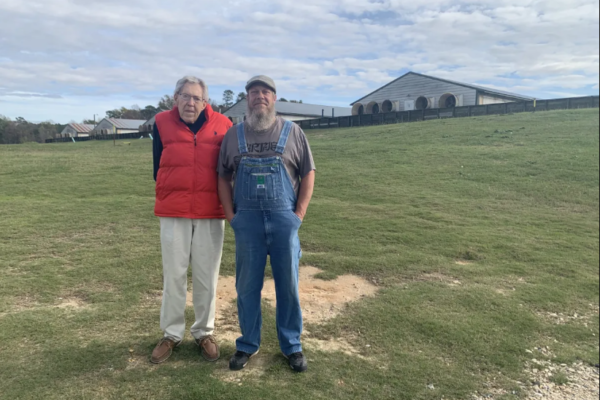By: Erika Bolstad, Pew Charitable Trust
April 28, 2022
Don Myron is probably best known as the guy who survived one of the deadliest fires in Oregon’s history by sheltering overnight in a river with a patio chair. So there was never any question that Myron would rebuild his home in Oregon’s Santiam Canyon after the house was destroyed in the Labor Day wildfires of 2020.
The well Myron shared with nearby homeowners was no longer available, which meant one of his first tasks was to drill his own new source for drinking water.
“It's hard to rebuild without water,” Myron said. “It's hard to do anything without water. It was a priority.”
But with climate change confronting communities across the West, people who rely on wells are at particular risk as wildfires grow in intensity and frequency. Without vegetation, fire-scarred land becomes more susceptible to mudslides that can damage watersheds. Drought can increase the concentration of pathogens and other contaminants in well water. And fires can damage the well equipment and piping, leaching toxic chemicals into drinking water and forcing property owners to consider costly repairs, upgrades and filtering systems even as they rebuild their homes and businesses. Beyond the West, heavier rains and floods threaten well water quality, too.
In Oregon, about a quarter of state residents rely on private wells for their water supply, according to the Oregon Health Authority. An estimated 2,000 households that rely on private wells were affected by the Labor Day fires of 2020, which, fueled by severe windstorms, rank among the largest and deadliest fires ever experienced in the state. In response, the state established a free voucher program that pays for people affected by the Labor Day fires to test their well water for some contaminants.
Once Myron's well was drilled and operational, he used the voucher to have the water tested. It was “as clean as could be,” Myron said. “I was pleasantly surprised.”
As States Prepare for Disasters, They Acknowledge Things Will Get Worse
Such testing is increasingly common in Western states. After the 2018 Camp Fire nearly destroyed the town of Paradise in northern California, the Butte County Health Department warned residents that creeks and rivers flowing from fire-affected areas could contain elevated levels of heavy metals such as arsenic, a carcinogen, and lead, a neurotoxin. The fires damaged municipal systems and an estimated 2,438 private wells in what is, for now, the deadliest and most destructive wildfire in California history.
The county also alerted property owners that contaminants could seep into the aquifers tapped by private wells. Butte County not only warned people to test for contaminants, but also advised them to drink pricey bottled water until they knew the full extent of the fire damage to their wells.
If a fire burned or damaged the casing or plumbing around a well, officials warned, such breaches could cause bacterial growth, including E. coli, which can cause severe gastrointestinal distress. Heat damage from the fires also can compromise the plastic components of wells, potentially leaching dangerous chemicals into drinking water.
Many of the fire-scarred communities of the West now are using guidelines developed in part by researcher Andrew Whelton, an engineering professor at Purdue University and director of the school’s Center for Plumbing Safety. Whelton studies water safety after wildfires, most recently after the Marshall Fire in suburban Boulder, Colorado.
Health departments and state regulators needed a baseline understanding of what they should tell property owners, Whelton said, and in many cases were too overwhelmed by the logistics of disaster management to develop their own.
“The people that were most affected by the contamination, the people that were receiving water that may or may not be contaminated, they may or may not have contaminated plumbing,” Whelton said. “They didn't have any single authority to go to, to get advice.”
Few States Require Testing
Most of the states that require that private wells be inspected or tested for integrity or water quality only do so when they're first drilled or when a property changes hands. It's generally up to an individual homeowner to pay to maintain a well and monitor its water quality.
As a result, few wells are tested regularly. Polling shows that many Americans care deeply about water quality. But despite highly visible water crises, including high lead levels in Flint, Michigan, and scarcity within the Navajo Nation, the quality and safety of drinking water often are taken for granted. People turn on their taps and expect it to be fine.
A Parched West Remains Divided on Desalinating Seawater
In Oregon, only about 200 property owners with private wells have sought testing vouchers following the 2020 fires, said Curtis Cude, manager of the Oregon Health Authority’s domestic well safety program. Public health officials expected more people to apply for the vouchers, though they acknowledge that, because repairs can be expensive, wells may be a lower priority for some families.
“One of the things that we were hearing, especially last year, is that people were still buried in ash and debris,” Cude said. “And some of those properties were so extensively damaged that they hadn't the opportunity to even think about getting their well on line.”
Nationwide, an estimated 40 million people obtain their drinking water from a domestic well, according to estimates by the U.S. Geological Survey. Many of those people are in rural communities not serviced by municipal water systems. In the West, homes with private wells are often in the places most vulnerable to increasingly hot or intense wildfires or the effects of drought.
In states prone to wildfire, water quality remains an existential threat. The burden of sourcing uncontaminated water can be particularly stressful on people who've survived a wildfire.
For example, Whelton points to a study of attitudes about water safety, which surveyed 233 households in Butte County, California, after the Camp Fire. More than half of respondents, 54%, self-reported that at least one member in their household had anxiety, stress or depression directly related to securing water, or in connection with water contamination issues. Most people who were surveyed said uncertainty about water and plumbing safety prompted them to alter water use in their homes. About 47% installed in-home water treatment technologies; 85% said they sought out alternate water sources.
Wetter Storms Worsen Pollution
Yet well contamination is a problem all over the country, including in places where climate change means more frequent and more intense rain events. In the Midwest, the intensity and frequency of rainstorms has increased since 1901, according to the most recent National Climate Assessment. It’s projected only to get worse. Heavy rains can overwhelm sewer or septic systems, transporting pathogens to the groundwater drawn up by wells.
In 2018, hurricanes Florence and Michael inundated coastal Florida, Georgia and the Carolinas, dumping more than 30 inches of rain in some places. The storms affected as many as 730,000 wells in the region, according to estimates from the National Groundwater Association. In North Carolina, the rains from Florence flooded more than 30 hog lagoons full of pig waste. The overflowing toxic muck from floodwaters can seep into the aquifer or make its way down into wells from flooding at the surface.
Few Wells Tested for Contamination After Major Flooding From Hurricanes
In the wake of the storms, North Carolina tested 1,000 private wells, said Wilson Mize, a regional environmental health specialist with the N.C. Department of Health and Human Services. After Hurricane Florence, 13% of the wells tested were positive for E. coli. Typically, with new wells, only about 3% test positive for it. The results gave health officials a good indication that floodwater was entering the wells, Mize said. The positive results for E. coli dropped to about 3% after wells were disinfected.
The numbers provided state health officials a baseline for the effects of flood-related pollution on wells, which is a matter of critical public health concern—about 2.4 million people rely on wells for drinking water in the state. Since 2018, North Carolina has developed a program to get information out to people with wells who face heavy rainstorms. In areas with many wells, county officials place door hanger pamphlets with information about how to care for a well before and after a storm.
Along with NASA and a researcher at Northeastern University, North Carolina is developing a well water surveillance and response system. It will create a mapping tool that, after flooding, will pinpoint the areas in the state with private wells. It’s aimed at helping the state determine where to emphasize sampling and disinfection after hurricanes, tropical storms and other heavy rains.
Midwest Agriculture Can Threaten Wells
In parts of the Midwest, nitrate pollution from fertilizer is especially troublesome after heavy rains, said Scott Laeser, the water program director for Clean Wisconsin, an environmental nonprofit. About a third of Wisconsin residents draw their drinking water from private wells, Laeser said.
About 90% of nitrate contamination comes from manure and commercial fertilizer application. When heavy rainstorms dump water, they wash away the fertilizer on farm fields. Nitrates are especially mobile, and, once rainwater saturates the ground, the compounds quickly descend into the groundwater. Then, the chemicals reemerge in people’s well water. Nitrates are most notable for causing what’s known as blue baby syndrome, a condition that results in low oxygen levels in the blood.
The threat of well pollution from manure is so severe that the state of Wisconsin operates an online risk advisory forecast to help farmers understand how weather conditions and soil temperatures might exacerbate runoff. It is updated three times a day by the National Weather Service.
Laeser said the conservation work conducted by Clean Wisconsin to prevent runoff has been based on the assumptions of past climate patterns, not a present and future in which major rainstorms are increasingly frequent. The group’s conservation measures in the state weren't enough before, he said, but now, they look “increasingly inadequate in the face of the extreme weather challenges that we're facing.”
“What we are having to do is kind of toss those out because they aren't relevant anymore,” Laeser said. “Places in western and northern Wisconsin are getting 100- and 500-year storms annually or biannually.”
Agriculture has the potential to be a big part of climate solutions, Laeser said. Synthetic fertilizer production uses fossil fuels, in particular natural gas. Heavy fertilizer use contributes to greenhouse gas emissions.
Reducing synthetic fertilizer use helps both the climate and water quality, Laeser said. So does finding ways for farms to be financially resilient and sustainable—including incentivizing growers to set aside wetlands—that don't “solely reward them based on as much cheap food as possible.”
“There's a huge opportunity in that we can address so many water and climate challenges simultaneously,” Laeser said. “The connections between our water and climate challenges are becoming clearer by the day.”





